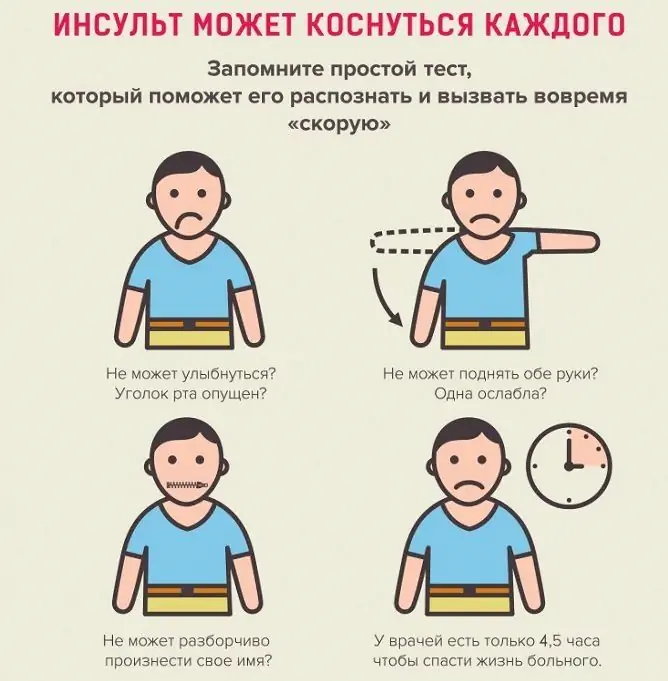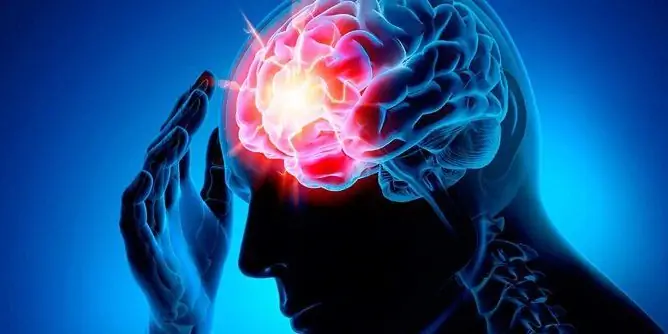- Author Rachel Wainwright [email protected].
- Public 2023-12-15 07:39.
- Last modified 2025-11-02 20:14.
Mastocytosis

Mastocytosis is a disease of the circulatory system, in which massive special cells are formed - mast cells, mast cells and tissue basophils. These cells permeate various internal organs and skin.
Classification of mastocytosis
Mastocytosis has two forms - cutaneous and systemic.
Cutaneous mastocytosis is usually mastocytosis in children. With mastocytosis, children develop urticaria pigmentosa, a diffuse or local maculopapular rash on the skin that is brown or orange-pink in color, which occurs due to the accumulation of a large number of small mast cells.
Less common is diffuse cutaneous mastocytosis, in which there is an infiltration of the skin with mast cells without discrete lesions.
Most often, cutaneous mastocytosis in children appears before the age of two years.
The systemic form of mastocytosis often occurs in adults. It manifests itself as multifocal bone marrow lesions, while it can also affect the skin, lymph nodes, spleen, liver and gastrointestinal tract.
There are several classifications of systemic mastocytosis:
• Painless. Has a positive outlook;
• Associated with other hematological disorders (with myeloproliferative disorders, lymphoma, myelodysplasia);
• Aggressive mastocytosis. Characterized by severe organ dysfunction;
• Mast cell leukemia, in which more than 20% of mast cells are observed in the bone marrow, there are no skin lesions, multiorgan lesions. Has a poor prognosis.
Signs and symptoms of mastocytosis
Cutaneous mastocytosis mainly affects only the skin. In this case, the following symptoms are observed:
• redness of the skin;
• itchy skin;
• reduced pressure;
• periodic heart rate increase;
• periodic increase in body temperature.
Systemic mastocytosis affects:
• nervous tissue;
• spleen (it increases in size);
• bone marrow (normal cells in the bone marrow are replaced by mast cells, leukemia is formed);
• liver (the liver enlarges, hardens, and fibrous nodes appear in it);
• digestive tract (diarrhea and ulcerative lesions appear);
• skeletal system (osteoporosis is formed (softening of the bones) and osteosclerosis (bone tissue is replaced by connective tissue), bone pain appears);
• lymph nodes (enlargement and appearance of painful sensations).
Diagnostics
To diagnose mastocytosis, blood is examined. Mastocytosis is evidenced by the presence in the blood of many mast cells, as well as tryptase and histamine, which are the products of their vital activity.

To determine the number, type and degree of development of mast cells, a biopsy of the skin, bone marrow and other affected organs is performed.
To detect any disorders in the spleen or liver, CG and ultrasound are performed. For lesions of the digestive tract, endoscopy is used.
Treatment of mastocytosis
To start treatment of mastocytosis, you should contact a therapist and hematologist.
For the treatment of mastocytosis, symptomatic therapy is used, which is aimed at suppressing the production of biologically active substances by mast cells:
• Nedocromil sodium, Ketotifen - to stabilize membranes on mast cells;
• Zodak, Tavegil, Suprastin - as antihistamines.
In the presence of diffuse systemic mastocytosis, removal of the spleen is indicated.
With severe mastocytosis or with its resistance to antiallergic drugs, PUVA therapy is used. This therapy effectively reduces the number of rashes. Improvement is observed after 25 sessions of PUVA therapy at 3-5 J / cm² per session.
YouTube video related to the article:
The information is generalized and provided for informational purposes only. At the first sign of illness, see your doctor. Self-medication is hazardous to health!






